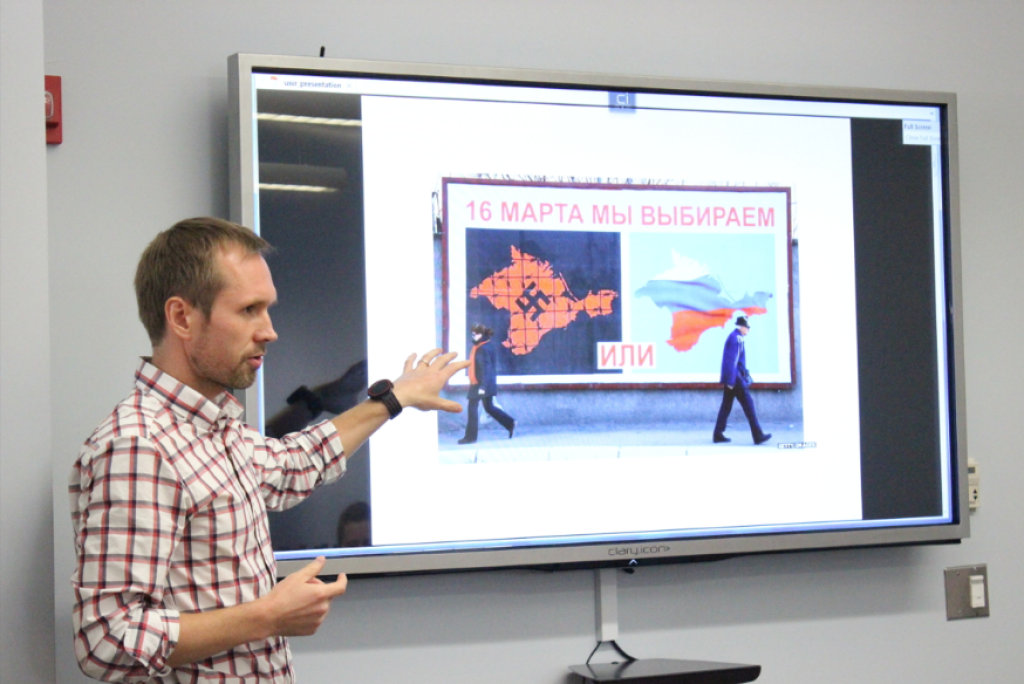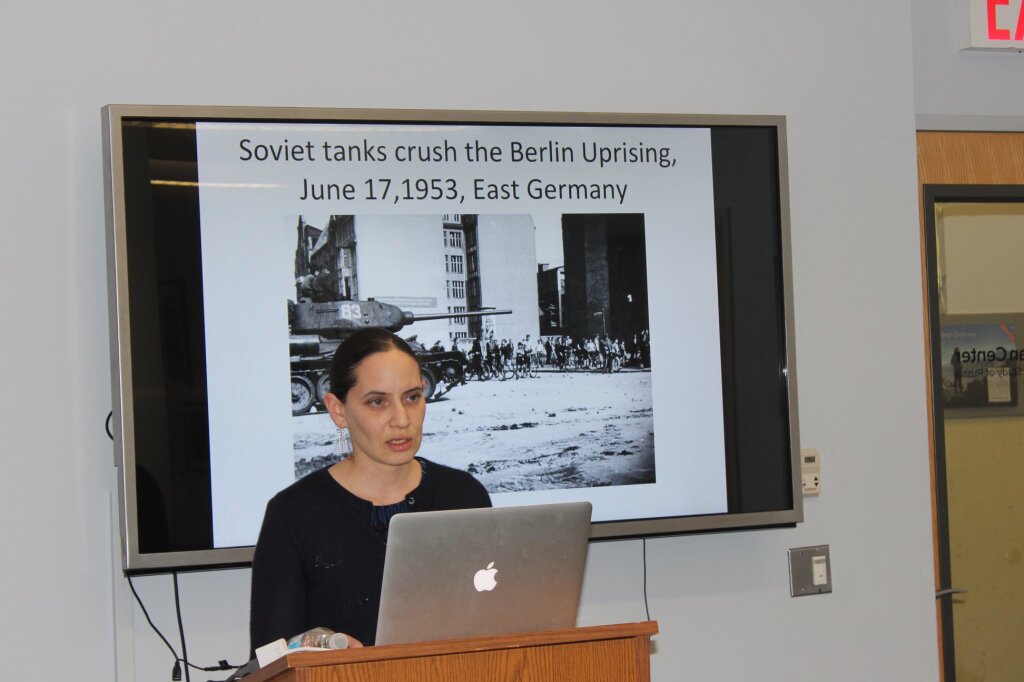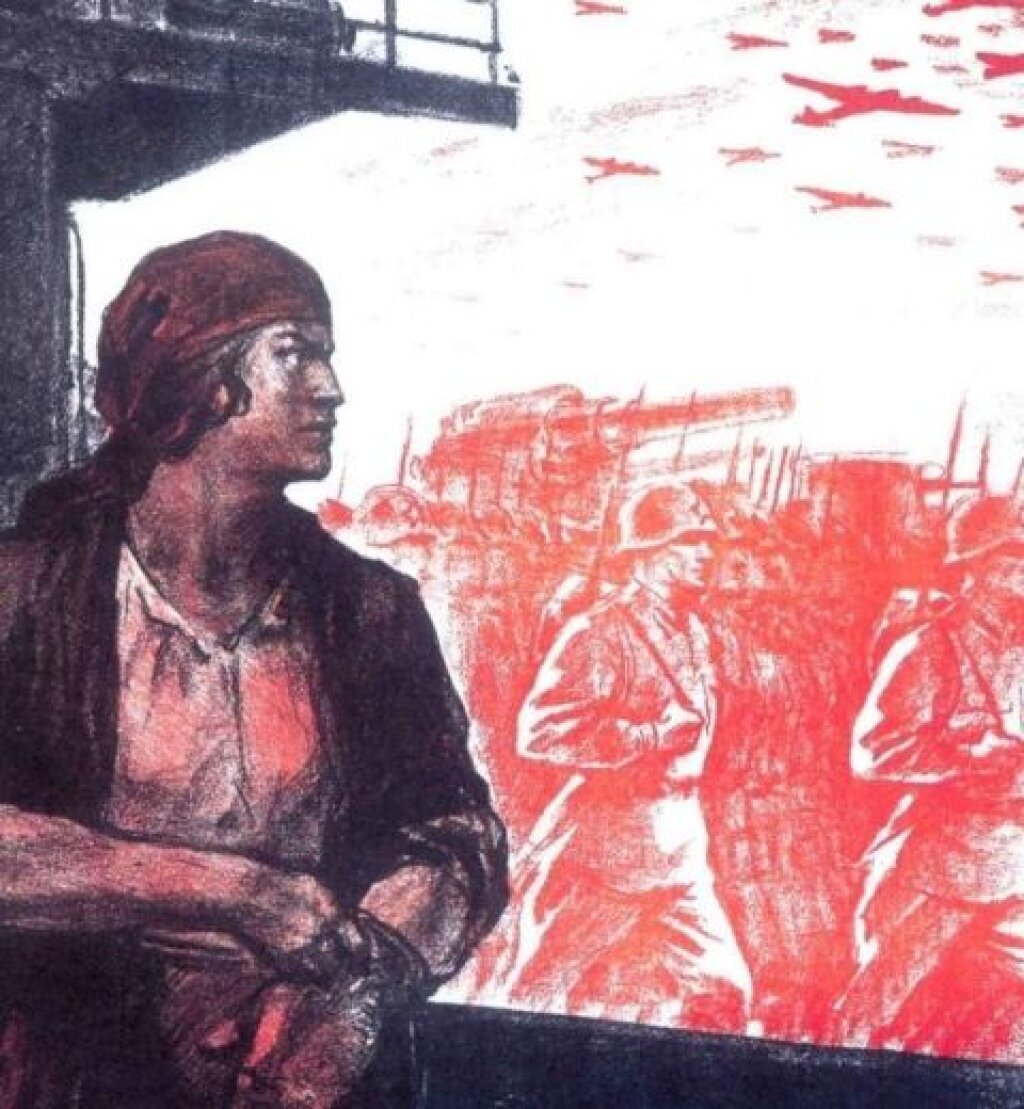Sept. 12 marked the opening of the Jordan Center’s Fall 2014 Colloquium Series with a presentation by Arturas Rozenas, Assistant Professor at the NYU Department of Politics, whose current research focuses on authoritarian states, electoral competitions and statistical methodology. Rozenas presented a paper on the nature of Soviet elections, which he had written several years ago and currently wishes to revive with newly gathered data from the KGB and Communist Party archives in Lithuania.
Director of the Jordan Center Yanni Kotsonis opened the talk by stressing that it is the first time that a scholar from the Department of Politics presents in the Colloquium Series, a circumstance that promised a fruitful discussion and a necessary negotiation of terminology.
Beginning with speedy examples of contemporary methods of propaganda in electoral campaigns in present day Russia, Rozenas quickly jumped to the point by stating that the electoral strategies have barely changed since the beginning of the Soviet rule. The most prominent features of these elections are of course the heavy propaganda that presents the citizens with the simple choice between “good and evil” (for example, between the “innocent Russia” and the “fascist Ukraine” in the recent case of the Crimean referendum) and single-option ballot papers.
The main question that Rozenas raised in his talk was why the Soviet authorities put so much effort into running non-competitive elections if the final outcome of the election was predetermined from its outset. He stated that in the case of Lithuania (as elsewhere), the Soviet government was meticulous about ensuring a large turnout and “making it a conscious choice” on the part of the citizens: “There was an effort to get the numbers up, some effort to mobilize it. Not to pretend that there was mobilization, but to actually mobilize the population.” According to Rozenas, some ways to attract voters were propaganda posters that signaled the newly presented opportunity to vote in workers rather than rich landowners, and the distribution of sugar quotas in various electoral districts – a commodity that was most coveted during the war period.
Apart from attracting voters, Rozenas stated that it was very important for the Soviet authorities to monitor and record the actual election results. For example, he described ways in which troops were mobilized in various electoral districts in order to protect the ballot boxes. Last but not least, the archival materials reveal how much emphasis was placed on counting and keeping track of the actual votes. Rozenas maintained that the goal of mobilizing rather than fully coercing voters lies in the contested nature of the qualitative results by both the state authorities and the guerrilla groups, which also attempt to seize public support. During the war period, after the Soviet troops marched into Lithuania without a single shot in 1940, the country saw a strong and continuous buildup of anti-Soviet guerrilla activity up until 1953 (these activities actually continued all the way until the early 1980s). Guerrilla groups would often play their own games by trying to intimidate people to not vote by threatening or killing the citizens. Thus, the citizens were harassed both by the government and the insurgents.
Rozenas said that these elections can provide some information about the actual support for the government. Opposition, in turn, may use this information for strategic planning of riots and underground groups. If the opposition believes that they are a minority, they are less likely to organize dissent. If, however, they suspect for the election results to be completely fabricated, they are more likely to mobilize acts of resistance. Rozenas added: “If [the strategy of the authorities] is to always lie, the best strategy of the opposition is to ignore the elections’ results.”
The ensuing discussion centered around the differences of disciplinary approaches. When asked, for example, if this pattern of election strategy is determined by the Bolshevik regime, Rozenas replied that his strategy is to work with a concept rather than with a specific ideology: “I don’t want to refer to Bolshevism, I don’t want to refer to communism. I want to extract a pattern. I can make the same claim for Hitler’s 1938.”
Rozenas demonstrated several ways in which he graphs out statistical archival data to reveal particular patterns in the relationship between election times and waves of dissent.Linking his thesis about the contested nature of qualitative outcomes of the elections, he stated that once you extract the noise and look at the averages, you see that dissent decreases around elections. At one point he added: “I am thinking of a system where the elections make it costly for those who want to dissent.”
The concluding remarks of Rozenas’ talk were greeted with more questions from the audience, some of which dealt with the definition of dissent and difference between authoritarian and democratically run elections. The talk concluded with highlighting the particularities of political science as a discipline which often - and more than others - allows for cross-national debates.



